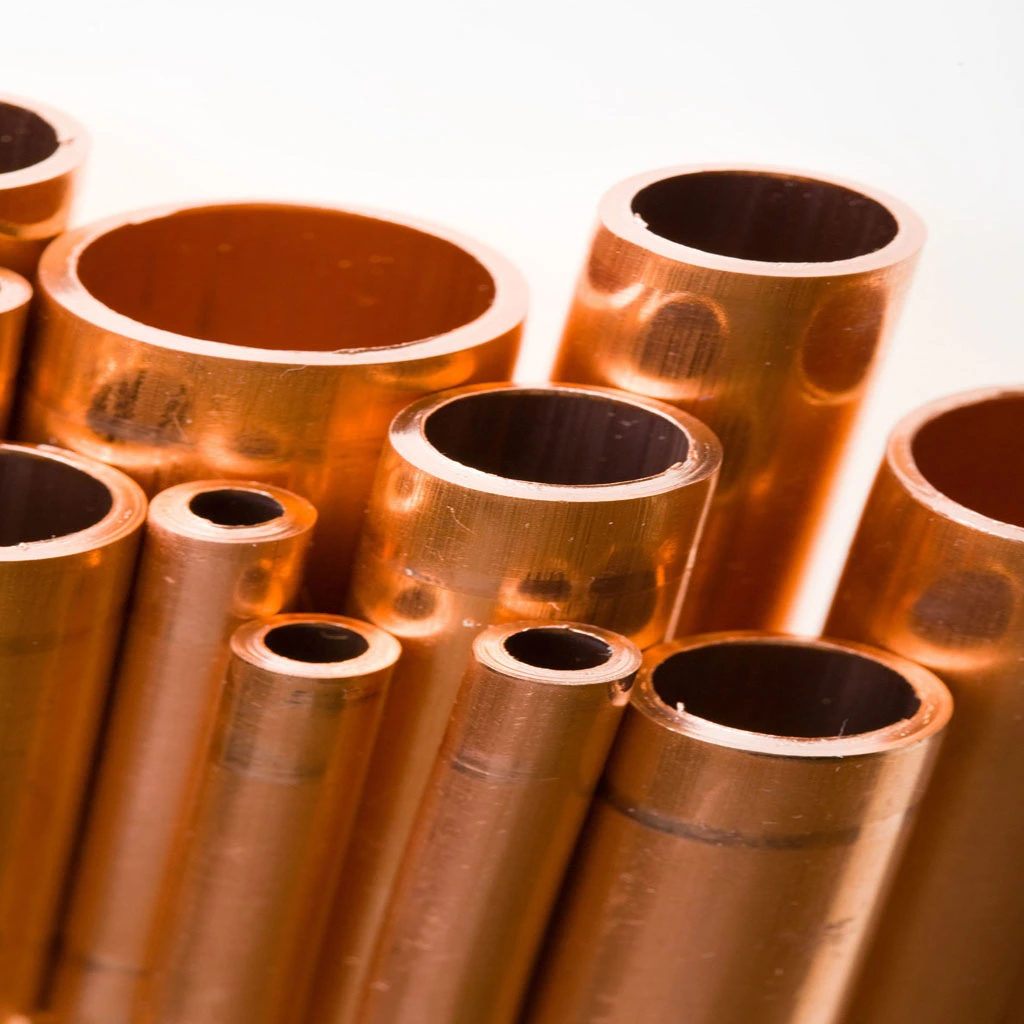Properties and Applications of Copper Alloys
2023-04-03
What are Copper Alloys?
Copper alloys are materials made by combining copper with one or more other metals to create a new alloy with different properties than copper alone. These alloys can be used in a wide range of applications because they possess desirable properties such as high strength, corrosion resistance, electrical conductivity, and thermal conductivity.
What are the characteristics of copper alloy?
Copper alloys possess a wide range of characteristics, depending on the specific alloy composition. However, some common characteristics of copper alloys include:
High thermal and electrical conductivity: Copper alloys are excellent conductors of heat and electricity, making them ideal for electrical wiring, heat exchangers, and other applications that require efficient transfer of energy.
Corrosion resistance: Many copper alloys are highly resistant to corrosion, making them suitable for use in harsh environments, such as marine and industrial settings.
Ductility and malleability: Copper alloys are often very ductile and malleable, meaning they can be easily formed into various shapes and sizes, making them suitable for a wide range of applications.
Strength and durability: Some copper alloys, such as bronze and beryllium copper, are known for their strength and durability, making them ideal for use in applications that require high levels of strength and wear resistance.
Color and aesthetics: Copper alloys can exhibit a range of colors and finishes, from the reddish-gold of pure copper to the deep brown of bronze, making them suitable for decorative and architectural applications.
Most Common Copper Alloys
Copper alloys are widely used due to their desirable properties, including high thermal and electrical conductivity, corrosion resistance, ductility, and strength. Some of the most commonly used copper alloys include brass, bronze, cupronickel, beryllium copper, copper-nickel-zinc alloys, and copper-tungsten.
Brass, which is a copper-zinc alloy, is commonly used in plumbing fixtures, decorative items, and musical instruments due to its good corrosion resistance and high malleability.
Bronze, a copper-tin alloy, is stronger and more durable than pure copper, making it suitable for the manufacture of sculptures, marine hardware, and bearings.
Cupronickel, a copper-nickel alloy, is commonly used in marine applications and desalination plants due to its resistance to corrosion and erosion.
Beryllium copper is a copper-beryllium alloy that is very strong and durable, making it ideal for use in the aerospace and defense industries.
Copper-nickel-zinc alloys and copper-tungsten are also used in various industries, each with their unique properties and advantages.
In which areas of application are copper alloys commonly used?
Copper alloys are used in a wide range of applications in various industries due to their desirable properties such as high thermal and electrical conductivity, corrosion resistance, ductility, and strength. Here are some common areas of application for copper alloys:
1.Electrical and electronics: Copper alloys, particularly brass and bronze, are commonly used in electrical wiring and components due to their high electrical conductivity and corrosion resistance.
2.Automotive and aerospace: Copper alloys are used in the automotive and aerospace industries for applications such as heat exchangers, electrical contacts, and engine parts, due to their high strength, thermal conductivity, and wear resistance.
3.Marine: Cupronickel is a popular copper alloy used in marine applications due to its resistance to corrosion and erosion.
4.Architecture and construction: Copper alloys are used in architecture and construction for roofing, gutters, and decorative elements due to their durability, malleability, and aesthetics.
5.Industrial machinery: Copper alloys are used in the manufacture of industrial machinery components such as bearings, gears, and valves due to their strength and wear resistance.
6.Musical instruments: Copper alloys such as brass and bronze are commonly used in the manufacture of musical instruments due to their malleability, acoustic properties, and aesthetic appeal.
Overall, copper alloys are used in many areas of application due to their versatile properties and wide availability.
How should copper alloy be maintained?
Proper maintenance of copper alloys is essential to ensure their longevity and performance. Here are some tips on how to maintain copper alloys:
Cleaning: Regular cleaning is important to prevent the buildup of dirt, grime, and tarnish on copper alloys. Mild soap and water or a solution of vinegar and salt can be used to clean copper alloys, followed by a rinse with clean water and gentle drying with a soft cloth.
Polishing: Polishing can help restore the shine and luster of copper alloys. A commercial metal polish or a mixture of flour, salt, and vinegar can be used to polish copper alloys. After polishing, the surface should be wiped clean with a soft cloth.
Protection: To prevent the buildup of tarnish and corrosion, a protective coating such as wax or lacquer can be applied to copper alloys. This can help to maintain their appearance and prevent damage from exposure to moisture and other environmental factors.
Avoid harsh chemicals: Copper alloys should be protected from exposure to harsh chemicals such as chlorine, acids, and ammonia, which can damage the surface and cause corrosion.
Storage: When storing copper alloys, they should be kept in a dry, cool place with minimal exposure to moisture and humidity. They should also be stored separately from other metals to prevent galvanic corrosion.
